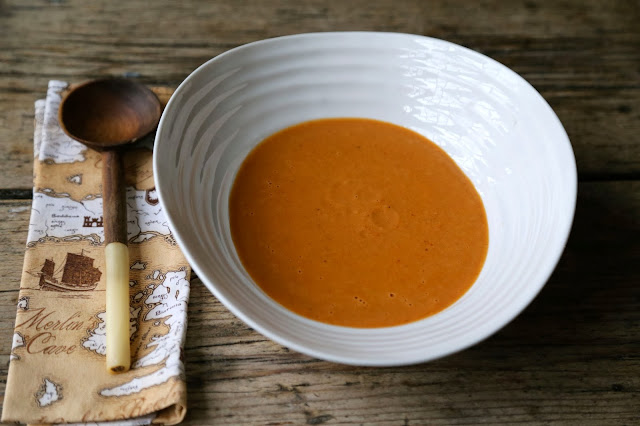“According to tradition a chestnut-tree…snared passing travellers in its branches and sucked away their blood”.
The most irritating thing about chestnuts is their two skins: the brown shiny shell and the pellicule, unpleasant, furry and astringent. The outer skin is no problem to remove but the inner skin is a bugger: hours winkling the flesh from the brain-like folds.

I’ve tried several techniques in my quest to painlessly prepare a fresh chestnut for eating. First you cut the shell on the flat side with an ‘x’. Having extensively perused the internet, here are some of the methods suggested:
- Soaking for 15 minutes then roasting
- Soaking for 24 hours then roasting
- Boiling for 7.5 minutes EXACTLY then peeling
- Soaking for 24 hours then roasting and peeling the outer skin then rubbing the inner skin with a tea towel
- Soaking for 12 hours then roasting then microwaving for 3.5 minutes
The last technique worked the best. But a further difficulty lies in retaining the velvety texture of the most delicious sweet chestnuts while avoiding the leathery hide that can so often occur.
Chestnuts, unlike most nuts, have no fat and contain mostly carbohydrate. Again, unlike other nuts, chestnuts contain vitamin C. It also contains minerals such as zinc, potassium, magnesium, iron, calcium and phosphorus. You can extract sugar from them, just as you can from beets, you can even extract oil, not that I’ve ever come across chestnut oil
The difference between horse chestnuts (conkers) and sweet edible chestnuts is the point on the nut. Horse chestnuts are round and smooth without a pointed tip. Horse chestnuts are easily found on the ground precisely because they are toxic and not even animals want to eat them.
Chestnuts can be boiled, roasted, ground into flour, candied and puréed. You can buy them fresh, dried, vacuum packed or whole, in a tin.
The trees grow well around the Mediterranean and are popular in both savoury and sweet European food. Chestnuts and acorns, which I recently bought in Portugal, are some of the oldest foods known to mankind. Acorns are bitter in comparison and require much leaching in order to be digestible and non-toxic.
Chestnuts are also popular in Japan, it is their oldest fruit, used in some classic Japanese dishes. They like to steam them with sushi rice combined with mirin and soy sauce.
Chestnut trees, sometimes known as the ‘bread tree’, are some of the oldest and largest trees in the world. There are famous chestnut trees such as the one in Amsterdam mentioned in Anne Frank’s diary.
“Nearly every morning I go to the attic to blow the stuffy air out of my lungs,” she wrote on February 23rd, 1944. “From my favourite spot on the floor I can look up at the blue sky and the bare chestnut tree, on whose branches little raindrops shine, appearing like silver, and at the seagulls and other birds as they glide on the wind.”
Her tree rotted and blew down in a storm in 2010.
There is another in Sicily (note to self: must get to Sicily) called the Hundred Horse chestnut which is about 4000 years old, as wide as a giant’s cummerbund and was so-called because a hundred strong horseback Aragonese army took refuge beneath during a storm.
 |
| Fresh European chestnuts, dried chestnuts, chestnut flour, smoked chestnut flour. Some of these I bought at the chestnut museum in Alentejo, Portugal |
My favourite things to do with chestnuts:
- Roast them and eat them, sprinkled with a little sea salt, their cracked skins nestling hotly in a cone of paper
- Roast them and eat them dipped in a fondue of chocolate, Catalan style
- Make one of my favourite desserts ‘Mont Blanc’ whipped cream, meringues and a sweet turd of creme de marrons from Clement Faugier (love their tins)
- Chestnut soup
- Chestnut stuffing
- Chestnuts with brussel sprouts
- Chestnut flour cakes, beautifully matched with chocolate
- and, most of all, marrons glacés
This last week I’ve been attempting to make marrons glacés. This is not for the faint of heart even for those of us motivated by the sheer cost of shop-bought, which is currently at almost £4 each, yes EACH. But having made them myself I now understand why they are so expensive. Aside from the snail-paced preparations, the double skinning, you must then boil them up in a vanilla and sugar syrup at least four times, once a day.
I tried to make them with ready-peeled tinned chestnuts, this didn’t work, the texture was leathery. So fresh sweet chestnuts, Castanea Sativa, is the only option. Choose the largest ones you can find and make more than necessary as some will break up during the glaçage. Make sure the chestnuts are firm, fresh and unmouldy or wormy.
 |
| Marrons glacés in vanilla sugar syrup |
Marrons Glacé recipe
20 large chestnuts
500g caster sugar
300ml water
1 vanilla bean
Soak the chestnuts in boiling water, letting it cool, overnight. Drain the chestnuts.
Slit a cross, trying to piece both skins but not the chestnuts (I know, impossible) on the flat side.
Then roast the chestnuts in a frying pan, in the oven or on a special chestnut pan until lightly blackened with the ‘cross’ starting to peel back.
Then remove them from the heat and microwave them for 3.5 minutes.
Then spend a long time peeling both the shell and the skin. Some you get lucky with and can peel in one piece. Others require fingernails and patience.
Prepare your sugar syrup:
You’ll need a medium heavy bottomed sauce pan, add the sugar, water and vanilla bean and heat until the sugar is dissolved.
Add the peeled chestnuts and cook for about five minutes.
Take the pan off the heat and leave the chestnuts to cool and soak up the syrup until the next day.
Repeat this process four times over four days.
By the end the chestnuts should have soaked up all the syrup.
The last time, at the end of the cooking, remove the chestnuts and place them on a baking tin lined with parchment paper or silicone mat. Leave them to dry.
Then place the chestnuts in a pretty box. This is another Christmas edible gift and it really is a labour of love.

Roasted red pepper and chestnut soup recipe
Serves 4
3 red peppers
1 large brown onion, diced
2 cloves of garlic, minced
Olive oil for frying
15 chestnuts, soaked, roasted, peeled
750ml of hot vegetable stock
A squeeze of lemon juice
Smoked salt to garnish (optional)
A drizzle of truffle oil (optional)
Preheat your oven to 180ºc.
Dice the onion and mince the garlic.
Put the red peppers on a baking tin in the oven, whole, and leave to roast until the skins are puffy and blackened. This takes about 15 to 20 minutes.
Using a frying pan on a medium heat, soften the onion and garlic in the olive oil, don’t allow them to get burnt. Once these are cooked, take off the heat and set aside until the peppers are roasted.
Once the peppers are sufficiently roasted (this means that all the skin will come off easily), take the red peppers out of the oven and carefully, with asbestos fingers, remove all the skin, the stalk and the seeds.
Using a powerful blender, I used a Vitamix, put in the onion/garlic mix with the oil from the pan, the red peppers with their cooking juices, the hot vegetable stock and the chestnuts. Whizz on high until it is a thick soft soup.
Serve with a squeeze of lemon juice, some smoked salt and some truffle oil, if you have it.







I LOVE Marron Glaces, have a feeling I might have left it a little late for this year sadly, but thank you very much for the recipe. New Year needs Marrons just as much as Christmas. (A Chestnut Is Not Just For Christmas)
Thanks for your comment Lynne. I do hope some people try it, but I understand it does seem time consuming. God but yeah, a death row food for definite.
well it isn't really time consuming, in the way that cooking a shoulder of lamb for 6 hours isn't time consuming, as the oven does it all and you only need to be there for the beginning and the end… each day only needs about 10 minutes after all. Just not sure that I have even that amount of time now!
Oh and btw, pressure cooking chestnuts gets both skins of fabulously. Have you got Catherine Phipps' fab book? the instructions are in there. Foolproof.
I do have Catherine Phipps' fab book! I just don't have a pressure cooker 🙁
Found you over here in Australia after watching you make gingerbread houses with Kirstie about five minutes ago. Love your blog!
Oh wow! Amazing. Thank you. The recipe and steps for the gingerbread house will be in my forthcoming book MsMarmitelover's Secret Tea party out next year.
I love chestnuts. That's it really.